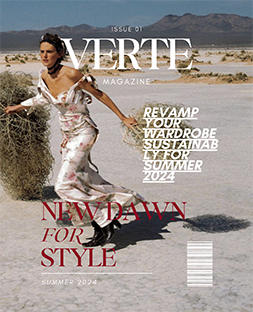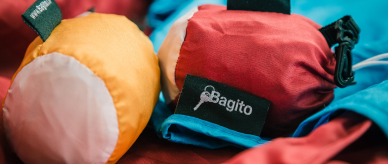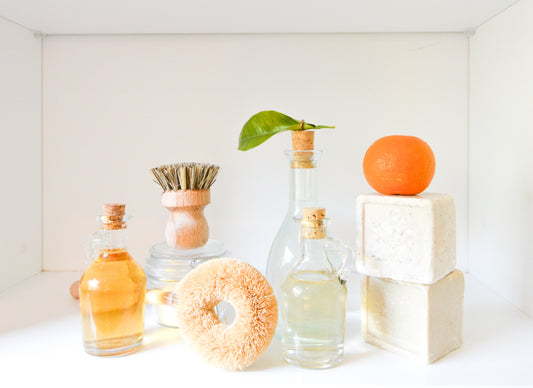10 Sneaky Sources of Plastic in Everyday Life
Plastic has become an integral part of our lives, but its pervasive presence and environmental impact demand our attention. While we're becoming more conscious of reducing single-use plastics like straws and shopping bags, there are other sneaky sources of plastic that often go unnoticed. In this expanded article, we'll delve deeper into ten unexpected everyday items that contain plastic and offer alternative solutions for a more sustainable lifestyle.
-
Tea Bags:
Tea bags have long been a staple for tea lovers around the world, but did you know that some tea bags contain plastic? Conventional tea bags often use a fine mesh made from plastic polymers like nylon or polypropylene. When steeped in hot water, these plastic-infused bags release billions of microplastics and nanoplastics. These microscopic plastic particles not only pose potential health risks when consumed but also contribute to plastic pollution in our environment.
To avoid the plastic in tea bags, consider switching to Handcrafted Organic Loose Leaf Oolong Tea | Verte Mode from Verte Mode. Loose leaf tea not only eliminates the plastic waste but also offers a more enjoyable tea-drinking experience. Loose leaf teas often come in a variety of flavors and blends, providing a wider range of choices to suit your taste preferences. Explore local tea stores or search online for endless options. You can even create your own blends using natural ingredients like peppermint, chamomile, lavender, ginger, or lemon.

-
Chip Bags:
Chips are a popular snack loved by many, but the packaging they come in poses a significant environmental challenge. Most chip bags are made from a combination of materials, typically an outer layer of aluminum foil for structure and an inner layer of polypropylene for moisture resistance. This hybrid material makes it difficult to recycle through conventional recycling programs, leading to a substantial amount of chip bags ending up in landfills or as litter.
To avoid contributing to chip bag waste, consider healthier alternatives like homemade snacks. Kale chips, for example, are easy to make and serve as a much healthier alternative to store-bought chips. You can also explore options like nuts, granola, Shār Snacks - Impossibly Good Trail Mix | 3.7oz — 3-Pack Shār Gift Box – Verte Mode, dried fruit, or other healthier alternatives often available in bulk at your local health food store. By opting for these alternatives and bringing your reusable bag or container, you not only reduce plastic waste but also make healthier choices for yourself.

-
Cans:
Aluminum cans are widely used for packaging beverages and food items, but did you know that they often contain a plastic-based liner? The purpose of this liner is to prevent corrosion of the aluminum can and to maintain the quality of the contents. However, the plastic liner can contain harmful compounds like bisphenol A (BPA) or similar synthetic alternatives. These compounds are known to disrupt hormones and can have adverse effects on human health.
To minimize exposure to plastic from canned goods, it's best to choose beverages packaged in alternatives to cans whenever possible. Look for beverages packaged in glass bottles or cartons. Additionally, consider refilling beverages in Smart Self-Cleaning Water Bottle - 16oz – Verte Mode, or glass reusable containers. When using canned goods, try to reduce your consumption and opt for fresh ingredients whenever possible. By making conscious choices, you can reduce your exposure to plastic and support a healthier lifestyle.

-
Paper Cups and Molded Fiber Containers:
Many of us enjoy a hot cup of coffee or grab a meal on the go, often served in paper cups or molded fiber containers. However, these seemingly eco-friendly options have a hidden secret—they often contain a thin layer of plastic. The plastic lining in paper cups provides moisture resistance, preventing the cup from becoming soggy and leaking. Similarly, molded fiber containers are treated with chemicals, including a class of compounds known as per- and polyfluoroalkyl substances (PFAS), to ensure they don't get soggy when holding wet or greasy foods.
To reduce plastic waste from paper cups and molded fiber containers, consider alternatives that prioritize sustainability like this Reusable Glass Coffee Cup with Cork Band – Verte Mode from Verte Mode. When possible, opt for dining in at restaurants that follow ocean-friendly practices and serve food in reusable dishes. If takeout or on-the-go meals are necessary, bring your own reusable containers to avoid single-use options. Stainless steel containers or insulated tumblers are excellent choices for carrying hot beverages or food. By making these small changes, you not only reduce plastic waste but also promote a more sustainable way of living.

-
Microwavable Popcorn:
Microwavable popcorn offers a convenient and tasty snack option for movie nights, but the packaging it comes in often contains plastic. The microwave-safe bags used for popping the kernels typically have a plastic coating or lining that can release harmful chemicals, including PFAS, when heated. These chemicals can contaminate the popcorn and pose health risks when consumed.
To enjoy popcorn without the plastic waste and potential health concerns, consider popping your own kernels on the stovetop using a pot, silicon bag, or invest in a popcorn maker. Not only is stovetop popcorn healthier and more customizable, but it also allows you to control the ingredients and reduce packaging waste. You can even purchase popcorn kernels in bulk to further minimize packaging. Don't forget to store leftovers in Bagito Zip-Em Reusable Food Storage Bags – Verte Mode.

-
Chewing Gum:
Chewing gum may seem harmless, but most conventional gums contain plastic. The chewy texture we love is often achieved by adding plastic polymers to the gum base. Additionally, gum may contain fillers, additives, and artificial flavors, further increasing its environmental impact.
To avoid plastic-based gum, seek out alternatives like plastic-free gum brands that use natural ingredients. Look for gums made with tree sap or plant-based gum bases. Alternatively, you can transition to all-natural mints, breathe sprays, mint-infused water, or simply chew on fresh mint leaves for a refreshing breath. Check out this breathe spray from PURE+Planted CBD Mask Survival Kit – Verte Mode.

-
Glitter:
Glitter adds sparkle and excitement to crafts, cosmetics, and celebrations, but it's also a significant source of microplastics. Traditional glitter is made from tiny particles of plastic that can easily find their way into the environment. When washed off, glitter enters water systems, posing risks to marine life and potentially contaminating our water sources.
To minimize the environmental impact of glitter, opt for alternatives that are biodegradable and environmentally friendly. Look for eco-friendly glitter options that are made from plant-based or mineral-based materials. Alternatively, consider using shredded recycled paper or other sustainable materials for crafting projects. By avoiding traditional glitter, you can still create beautiful and festive designs while safeguarding the environment. Check out Tai-Lite Beauty Multi-Purpose Glow Pigment - Omni | Verte Mode.

-
Wet Wipes:
Wet wipes have become a go-to convenience item for personal hygiene and cleaning, but most of them contain plastic. These disposable wipes are typically made from a combination of cotton and polyester, with added chemicals for fragrance and preservation. Despite their "flushable" or "biodegradable" claims, most wet wipes do not break down easily, leading to clogged sewage systems and contributing to plastic pollution in waterways.
To reduce your reliance on wet wipes, seek alternatives that are more sustainable and environmentally friendly. For personal hygiene, switch to traditional methods like using soap and water or opt for fragrance-free alcohol-based hand sanitizers when on the go such as Naturally London Multiuse Cleansing Spray – Verte Mode. When cleaning surfaces, consider using reusable cloth or paper towels along with natural-based cleaning solutions. For baby care, explore DIY projects for reusable wipes made from soft fabric. These changes not only minimize plastic waste but also offer healthier and eco-friendly options for your everyday routines.

-
Clothing:
Surprisingly, the clothes we wear can contain plastic. Synthetic fabrics like polyester, rayon, acrylic, spandex, and nylon are commonly used in the fashion industry. When we wash these garments, they release microplastics into the water, contributing to water pollution and the accumulation of microplastics in our oceans and waterways. Additionally, these plastic-based fabrics can have negative effects on our health, as they can release harmful chemicals and disrupt our endocrine system.
To minimize the impact of plastic-based clothing, prioritize natural fibers when making your wardrobe choices. Look for clothing made from materials like organic cotton, hemp, linen, wool, or silk such as Raw Silk Pinstripe Trousers – Verte Mode from Verte Mode. These natural fabrics not only reduce your contribution to plastic pollution but also offer breathability, comfort, and durability. When shopping, read clothing labels carefully and opt for sustainably made garments from brands that prioritize eco-friendly practices. By investing in high-quality, natural fiber clothing, you not only reduce your environmental footprint but also support a more sustainable and ethical fashion industry.

-
Furniture and Carpets:
Even the furniture and carpets in our homes can contain hidden plastic elements. Synthetic fabrics like foam, polyester, rayon, olefin, nylon, polyurethane, polypropylene, and composite wood are commonly used in furniture upholstery and carpeting. These materials can emit volatile organic compounds (VOCs) and contribute to indoor air pollution. Additionally, their production and disposal contribute to plastic waste and environmental degradation.
To create a more plastic-free home environment, opt for furniture made from natural materials whenever possible. Look for pieces made from sustainably sourced wood, bamboo, or rattan such as Hexa Blue Rug – Verte Mode from Verte Mode. Choose upholstery with natural fibers or organic fabrics. For flooring, consider alternatives like hardwood, bamboo, or tile instead of wall-to-wall synthetic carpets. When purchasing furniture, look for second-hand options or consider refurbishing and upcycling existing pieces. By embracing natural materials and reducing reliance on synthetic furnishings, you create a healthier living space while minimizing plastic waste.

By expanding our awareness beyond single-use plastics, we can identify and address the sneaky sources of plastic in our everyday lives. From tea bags to furniture, these unexpected items often contain hidden plastic elements that contribute to plastic pollution and environmental harm. By making conscious choices and seeking alternatives, we can reduce our plastic footprint and promote a more sustainable future.
Embracing loose leaf tea, homemade snacks, reusable containers, and natural-based alternatives allows us to enjoy our favorite products while minimizing plastic waste. Choosing clothing made from natural fibers and furnishing our homes with eco-friendly materials reduces our exposure to plastic and supports a healthier living environment. Together, we can make a difference by embracing a plastic-free lifestyle and inspiring others to do the same. Let's strive for a future where plastic pollution becomes a thing of the past, and sustainability becomes the norm.













